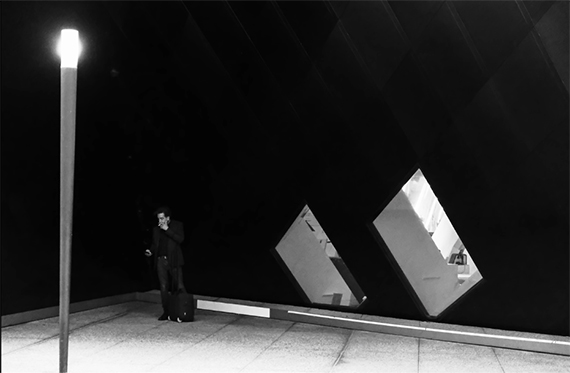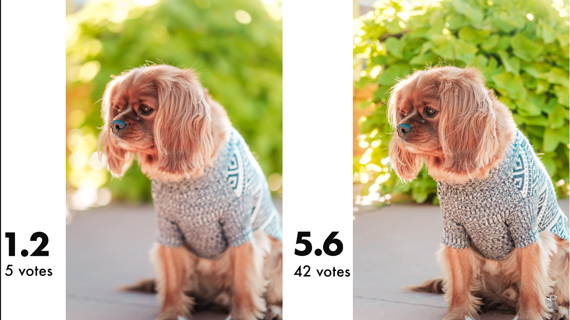Don’t you just love it when the background in your image melts away giving it a soft creamy look? Photographers love it and that’s why we spend thousands of dollars for wide aperture lenses. Most people love it and that’s evident by the increasing popularity of “portrait mode” on modern smartphone cameras. But at the end of the day, bokeh is just background. Should be we obsessed over it? Andrew of Denae & Andrew says that bokeh is overrated:
Andrew’s objective was to find out at what point an average non-photographer can tell the difference in photos with different apertures. So he conducted a survey. To achieve consistent results from varying subjects and locations, he kept the subject 4 feet away from the camera and the background 6 feet away from the subject.
“I chose a pair from each scene. The first shot of each pair was shot wide open at f/1.2 on an APS-C Fuji device with a 56mm 1.2 lens. And the second was pulled from one of the major stop aperture shots between f/1.4 and f/8.”
To ensure that the participants didn’t begin to fixate on the background, he filled the survey with other pairs of similar photos, so the differences seemed more random. For each pair of photos, he asked the 52 participants which of the two was better and why.
From the data that was collected, Andrew was interested in two things:
- At which point in the differences between apertures did people start to have strong opinions on which photo was better?
- At what point did people start using terms related to bokeh in their reasoning?
Based on the various feedback that he received from his survey, here are three key takeaways:
The Strength of a Photo is Not Measured in Terms of Background Blur
This may come as a shocker to younger photographers, especially those who are learning from online resources where people tend to put a greater emphasis on bokeh. There are other ways to create a better separation between the subject and the background. Creative use of lighting, leading lines, framing, and contrast produce more powerful separation than bokeh. Also, in order to understand the context of the story being told, it is essential to have the background in focus.
The Average Person is Indifferent About Aperture
Andrew realized through his survey that the average person is not able to find differences in the blur of images taken at different apertures even when they are specifically looking for it. What this means is that it doesn’t really matter in general if you take a photo at f/1.4 or f/2.8. There is no need to spend too much money on an ultra-fast, expensive prime lens. Moreover, the study also showed that people actually prefer to have some amount of detail in the images.
People Notice Sharpness First
The participants of the survey immediately paid attention to how sharp the subjects appeared. Background blur was not a priority for them. While bokeh can be important at times, it is more essential to have the subject sharp from front to back. Bokeh shouldn’t necessarily be a photographer’s top priority.
“What is in focus is always more important than what is not in focus.”
While Andrew’s survey suggests that a fast lens may not be a daily necessity, there can be certain situations where they are crucial. Consider low light photography or wedding photography in bad lighting conditions, for instance. A fast lens can be an artistic need when you need to completely obliterate the background. But with this said, Andrew still emphasizes that expensive fast primes aren’t for everybody.
What do you feel about the survey results? Do you put more emphasis on the details or on the background blur?
Like This Article?
Don't Miss The Next One!
Join over 100,000 photographers of all experience levels who receive our free photography tips and articles to stay current:







I agree with you absolutely
Well done. Good valid lessons. Bokeh MUST be used judiciously, not haphazardly .